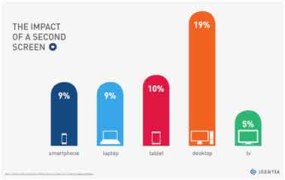



3 top trends in media intelligence
share on
Unprecedented changes to news production, distribution and consumption are driving the need for credible media insights like never before.
In a complex and changing world, journalism, public relations and corporate communications professionals are under constant pressure to adapt, and execute with speed. As new technologies give rise to changing consumer behavior, the ability to recognize emerging trends, extract value, and implement new ways of dialogue can bring distinct competitive advantage.
Home to many of the world’s high growth economies and rapid technology adoption rates, APAC (Asia Pacific) marketing and communication methods have been evolving at a faster rate than other, more mature regions. Analysing data from print, broadcast, online and social media sources, and feedback from our clients across the region, has brought to light a number of powerful trends affecting the way we all communicate.
Trend 1 : There is no "News Cycle"
The days of a conventional news cycle are long gone. The rise of “Ambient News” has come about with the growth of online readership, social platforms, mobile devices and citizen journalism, changing the industry forever.
With the now ubiquitous nature of news comes the need to know where and how stories evolve, if you are going to be able to impact the conversation in any meaningful way. This need to listen as well as act is often overlooked, to the detriment of many an organisation.
To assess your listening capability accurately, try creating a case study of your own, and track how and where a story morphs throughout its life. It is also critical to understand that audience reach, and credibility of source are the most influential components of a story today.
Trend 2: We are in the age of multiple screens and 'smart' technology
Singapore provides an extreme example of how far we’ve come. Over 8 million mobile devices are in use by a population of just 5.4 million people. Mobile broadband penetration in Singapore is also the highest in the world at 123% of the population or 6.7 million subscriptions.
What's the impact of that?
The following statistics from the Google report “Our Mobile Planet” are quite staggering. Rather than demonstrating the volume of people that are using 2nd and third screens, the graphic below shows the percentage of people who use a single screen in a unique way. This approach allows communicators to review theirs strategy based on device usage (amongst other variables) and craft strategies accordingly.
So what is the takeaway? Be smart, like the technology. Understand how usage varies by demographics and differs between markets. Ensure that your organisation has moved with the times, both in terms of your external and internal clients and stakeholders. This may involve taking a “mobile first” attitude to how you communicate your key messages to various target audiences.
Trend 3: Confusion reigns in media measurement
Inconsistent and massively diverse data and a lack of recognized standards threaten media measurement. Many companies are doing measurement well. However, across our 5,000 clients we often see inconsistencies and irrelevant measurement practices. Focusing on outputs rather than outcomes, and missing the opportunity to produce integrated measurement and reporting across all platforms (press, TV, radio, online and social) are common issues.
Staying ahead of the confusion requires adherence to globally accepted standards such as those supported by empirical evidence. If you are a PR and communications professional, you should consider joining the global body for media research, AMEC, (International Association for the Measurement and Evaluation of Communication). AMEC was originally heavily skewed towards companies in Europe and America, but since 2010 the APAC Chapter has been gathering momentum. As a member you will have access to a range of resources that will help you on your measurement journey, some examples include:
- Barcelona Principles (7 guiding, globally accepted, measurement principles)
- AMEC Plain Speaking guide to social media
News stories are now often interconnected across the range of media types and therefore to effectively trace and understand the living story, you must encompass both traditional and social media in your monitoring.
These are key trends that we believe are having a significant impact on the way companies, organizations and governments operate from day to day. If you’re interested in learning more, iSentia recently commissioned a research report entitled “Which media set the news agenda:Mass media or/and social media?"
Authored by Professor Jim Macnamara. PhD, the report is an independent review of research literature worldwide that answers the entitled question by examining the latest data on news sources and the relationship between traditional and social media.
To register for a free copy of your report, visit www.iSentia.com or learn more
The writer is Cameron Buckley, chief executive - Asia, iSentia
share on
Free newsletter
Get the daily lowdown on Asia's top marketing stories.
We break down the big and messy topics of the day so you're updated on the most important developments in Asia's marketing development – for free.
subscribe now open in new window

